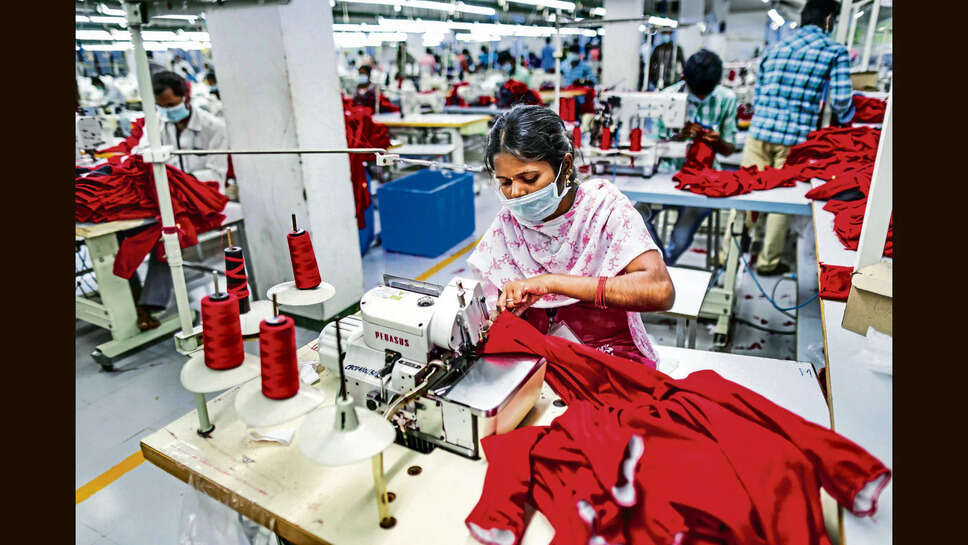Exporters Warn of Job Crisis as US Tariffs Hit India’s Apparel Sector

India’s textile and apparel industry, a vital pillar of the nation’s export economy and employment, is reeling from a fresh wave of anxiety as exporters warn of potential mass layoffs following renewed and intensified tariff barriers by the United States. The apparel sector, which contributes approximately 12% of India’s export earnings and employs millions, now finds itself squeezed between shrinking margins and geopolitical trade tensions.
The United States remains India’s single largest apparel market, accounting for nearly 27% of total garment exports. However, with rising trade restrictions, higher tariffs, and shifting global supply chains, exporters are beginning to sound the alarm. Industry associations claim that unless the Indian government steps in with decisive support, the industry could face its worst crisis in years—with widespread job losses, especially among women and daily wage laborers.
A Perfect Storm for Indian Apparel
The apparel industry has been under mounting pressure for the past few years. First came the pandemic-induced global slowdown, which disrupted supply chains and halted demand. Then inflation and recession fears in the West shrunk consumer spending. Now, the imposition of higher tariffs and tightening of rules under the U.S. Trade Act has added another layer of uncertainty.
Indian garments, which already face stiff competition from low-cost producers like Bangladesh and Vietnam, are becoming less competitive due to these new U.S. tariffs—reportedly ranging between 15% to 30% on some categories. Exporters say such rates make it nearly impossible to match prices offered by other Asian countries that enjoy either duty-free access or preferential trade agreements with the U.S.
“Our cost of production is rising, while access to global markets is shrinking,” says Rakesh Mehra, an apparel exporter from Ludhiana. “If this continues, I’ll have no option but to lay off workers. The government needs to act now.”
Threat to Jobs and Livelihoods
The most immediate concern is job loss. India’s textile and garment sector is the second-largest employer after agriculture, directly employing over 45 million people. The vast majority are low-income workers, many of whom are women.
Exporters warn that without policy relief or trade negotiations to address tariff disadvantages, hundreds of thousands of jobs could vanish within months. Contract workers and daily wage earners will be hit the hardest, with ripple effects extending to the families and communities that depend on them.
“We are already operating at 60% capacity,” says a garment factory owner in Tiruppur, Tamil Nadu. “If U.S. orders continue to drop, I may have to shut down completely.”
The Apparel Export Promotion Council (AEPC) has also issued a statement cautioning that if current trends continue, the sector could face “irreversible damage.”
Export Orders Drying Up
U.S.-based retailers and brands, long-time customers of Indian manufacturers, are increasingly shifting orders to other countries with more favorable trade terms. Exporters claim that despite India’s reputation for quality and compliance, American buyers are becoming price-driven due to domestic inflation and economic headwinds.
“Several of our clients are now sourcing from Bangladesh and Cambodia,” said a senior manager at a Noida-based apparel export house. “They have better margins there, and we can’t compete with the added burden of tariffs.”
As a result, Indian exporters are seeing a steep fall in fresh orders for the upcoming festive and winter seasons. Many are also burdened with inventory and delayed payments, leading to a dangerous cash flow crunch.
What Exporters Are Demanding
Faced with a potential crisis, the apparel export community is urging the Indian government to step in with an immediate action plan. Their key demands include:
-
Negotiation of trade agreements: Industry leaders are urging India to fast-track free trade agreements (FTAs) with the U.S. and EU to secure preferential access for garments and textiles.
-
Production-linked incentives (PLI): Exporters want more effective implementation of PLI schemes tailored specifically to the needs of small and medium garment units.
-
Export subsidies and duty reimbursements: Many are asking for the revival or expansion of the Rebate of State and Central Taxes and Levies (RoSCTL) scheme.
-
Currency management: Exporters argue that an overly strong rupee is hurting competitiveness. They urge RBI intervention to maintain a balanced exchange rate.
-
Skilling and upskilling workforce: With global buyers demanding more value-added garments, exporters want greater government support for upskilling labor in design, tech, and sustainability.
Government’s Response So Far
The Ministry of Textiles has acknowledged the issue and is reportedly in talks with the Ministry of Commerce to evaluate the full impact of U.S. tariff actions. A senior official hinted that policy-level interventions, including fast-tracking certain FTAs and revising export schemes, are under review.
However, critics argue that the government has been slow to respond, especially considering that competitors like Bangladesh enjoy duty-free access to the U.S. through Generalized System of Preferences (GSP) agreements, while India was removed from the program in 2019.
“There has to be urgency,” said an AEPC spokesperson. “The global trade environment is changing rapidly, and we need to adapt faster than ever before.”
Long-Term Implications
The crisis in the apparel export industry also holds broader macroeconomic consequences. India’s export growth is crucial for maintaining a healthy trade balance, earning foreign exchange, and boosting GDP. A slowdown in the garment sector will not only dent overall exports but also hit states that are heavily dependent on textile employment—such as Tamil Nadu, Gujarat, Punjab, and West Bengal.
Moreover, the social cost of job loss, especially for women, could reverse years of progress in rural financial inclusion and empowerment.
The Road Ahead
With global trade in flux and protectionism on the rise, Indian apparel exporters face a critical juncture. The choices made by policymakers in the coming months could determine whether the sector rebounds or spirals into prolonged stagnation.
Exporters are not asking for handouts, many emphasize—they want a level playing field. With the right mix of trade diplomacy, financial support, and strategic reforms, industry leaders believe India can regain its edge in the global garment market.
Until then, uncertainty reigns. And for millions whose livelihoods depend on sewing machines and export consignments, each passing week without government intervention inches them closer to crisis.
India’s apparel export industry stands at a precarious crossroads. While its craftsmanship, quality, and workforce remain unmatched, rising tariffs and global competition are rapidly eroding its footing. If left unchecked, the consequences won’t just be economic—they’ll be human. The time to act, say exporters, is now.
